Copyright © 2025 Motivate Media Group. All rights reserved.
Meet Dubai-based ceramics brand Cole&Cinder
The homeware brand offers a sense of nostalgia with its range of ceramic objects
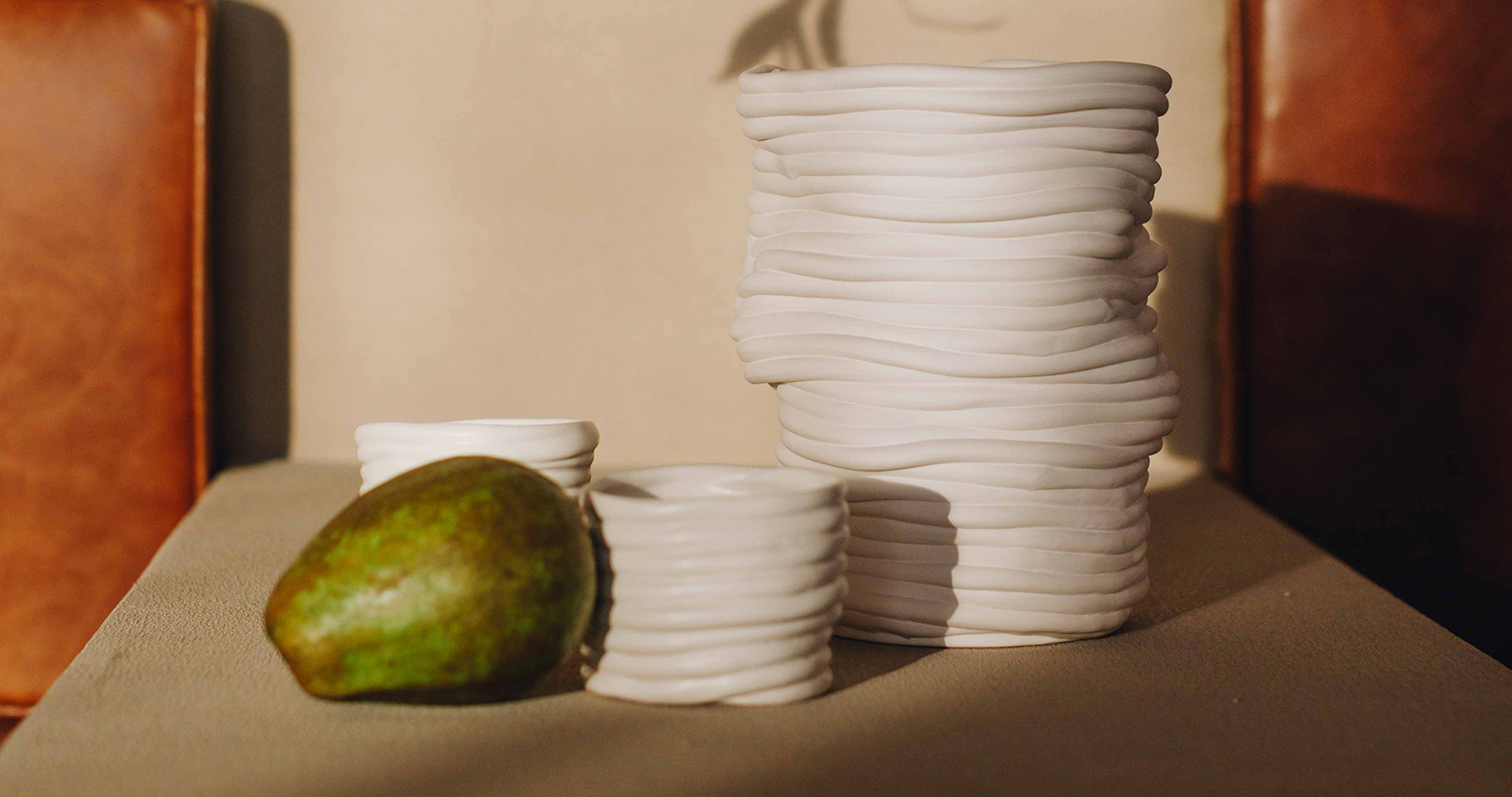
Dubai-born homeware brand Cole&Cinder was founded by Nicole Farrelly, creating irregular-shaped ceramin-ware, from vases and candle holders to bowls. identity speaks to Farrelly to learn more to learn about the brand.
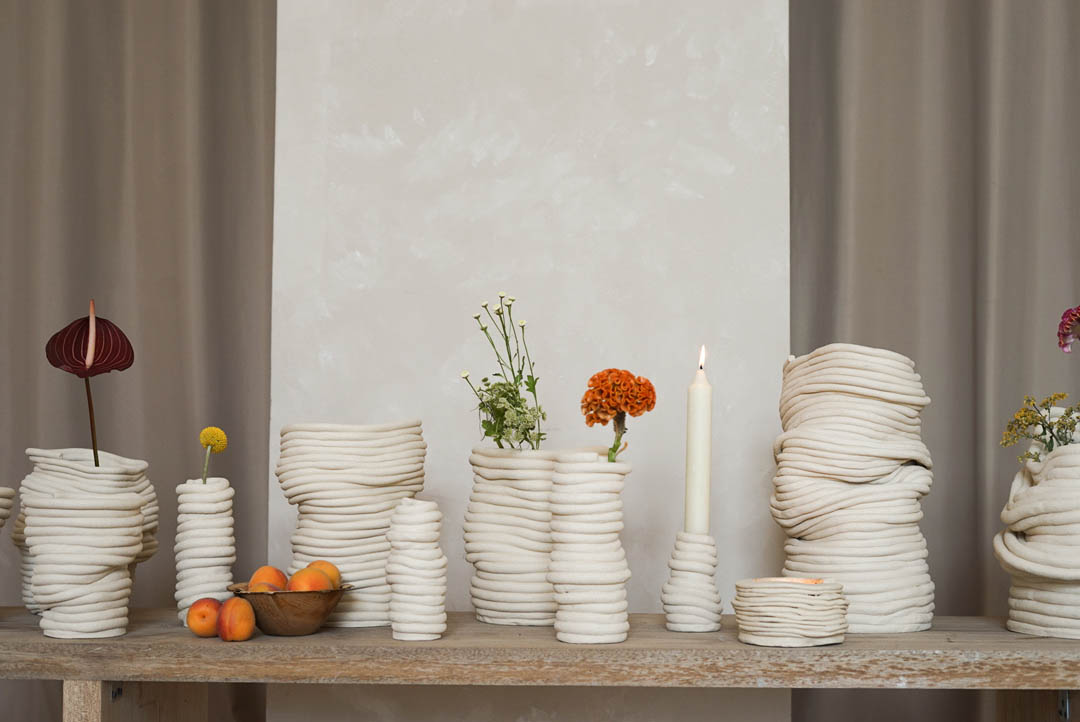
How did Cole & Cinder begin?
Nicole Farrelly: The brand started in such a bizarre and serendipitous way. My father has always encouraged us to find a way to work for ourselves, so I was constantly starting mini-home businesses and coming up with ideas, but nothing ever stuck. I was in a phase where I wanted to make everything myself, whether food or clothes or art. It was a time where I was obsessed with hard-boiled eggs, and I wanted to make my own egg cup. So, my mother-in-law (who has been a ceramicist for over 10 years) said she would teach me the coiling technique used in hand-building to [enable me to] create what I wanted. Unfortunately, halfway through making my egg cup I got distracted by something and the clay dried – and I was unable to blend the coiled egg cup out. I decided that instead of throwing it [away] and starting it again, I’d just fire it and see how it came out. I really loved how it looked and so I made a couple of other pieces similarly, without blending them, including a small straight vase. A couple of weeks passed, and I forgot to collect the pieces from the studio, and they were just sitting on the shelf. I received a call from my mother-in-law to say that someone was obsessed with the pieces and wanted to buy them, even after being told they weren’t for sale, and so she decided to sell them for me. I’m not sure how I felt at the time, but I think it was a combination of confusion as to why they wanted to buy them so desperately, and being upset that I had lost the pieces I had worked so hard on. After that I just never stopped. I just knew I had created something unique that people connected with.
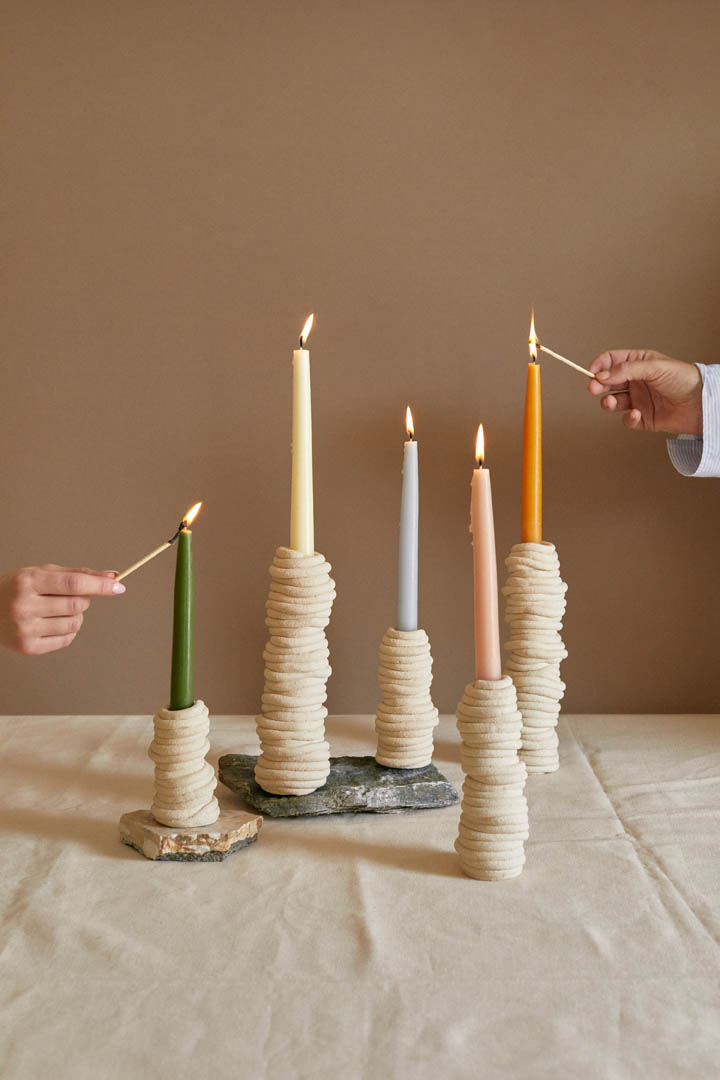
What is the vision behind the brand?
My vision is to build a sustainable brand – not only one that is sustainable for the environment but also sustainable for myself; a brand that evolves and grows with me. We are branching into other elements of design this year, which I’m very excited about, maintaining the same unique form in our future products and keeping the coil detail as our signature. I was explaining to someone the other day that because I hand-build all the vases, I can really see the mood or energy that went into them when they were being built, based on their form. Each piece is completely unique, and I love that for each individual [piece] there is [only] ‘the one’. When people come to the studio you see them fall in love with specific pieces, and it’s so interesting to me as to why they choose the ones they do.
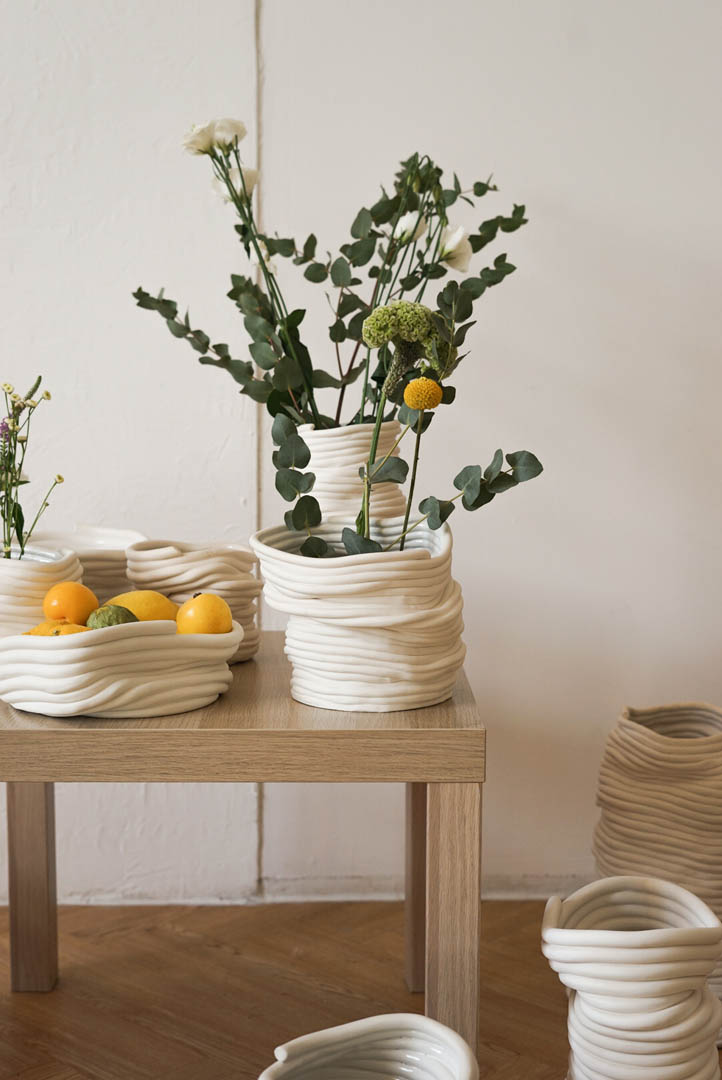
Can you tell us more about the materials you use and your production process?
The Fossil vases, Mysig candle and Fossil candle holders are made from a white stoneware clay that holds a high content of grog, meaning it has a rough texture. The Silk vases, bowl and candleholders are made from porcelain. I love working with porcelain. As we all know, the line between love and hate is very fine, but the fluidity, movement and finish are so worth the agony. When I am creating the Silk pieces it’s more about working meditatively with the clay and working with managing weight distribution and hydration. Creating the Fossil pieces allows for a lot more risks and daring structures, due to the fact they are left raw and there is no concern about assuring watertightness. Also, the texture of the grog when wet is easier to manipulate. The cups and mugs are now made by slip casting with porcelain. I created moulds using two slightly different hand-built cups so that they feel subtly mismatched. I just love the organic form and I didn’t want to lose it too much [by] using a mould.
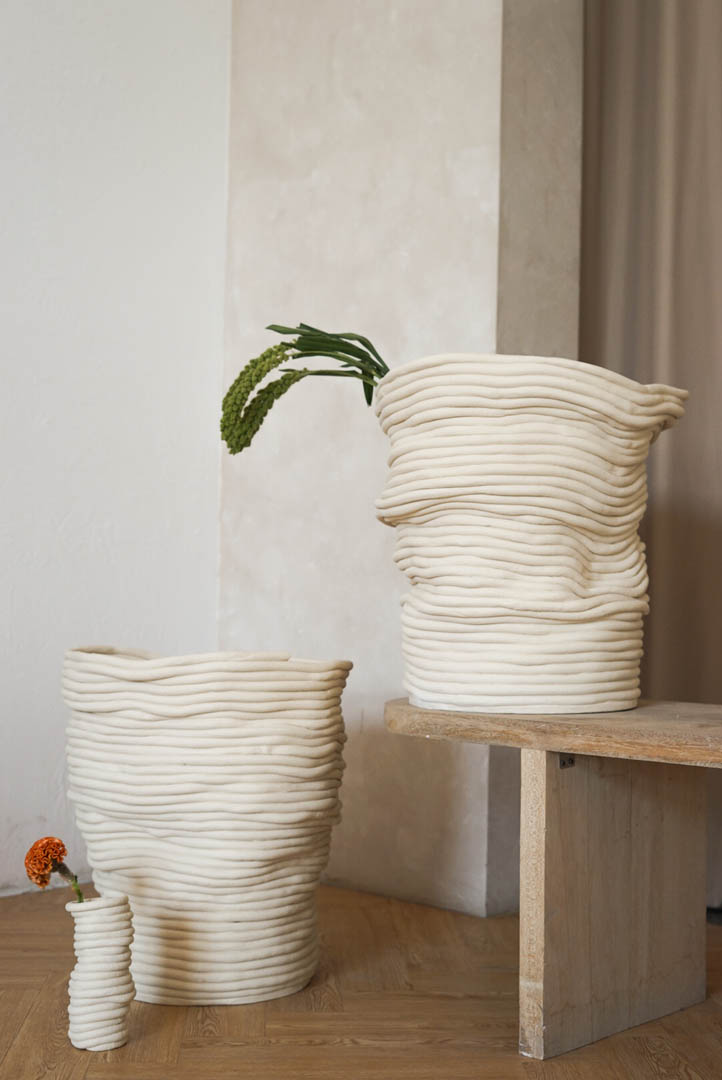
What is the main inspiration behind the objects?
The inspiration is mostly nature in general, whether it’s the ripples in a body of water or a sunlit rock face. I’m constantly inspired by things that are layered or repetitive. There is so much beauty in repetition. Creating in neutral colours allows the focus to be on the form alone and for you to fully appreciate the repetition. You’ll see from time to time on my Instagram some of these things, whether it’s a mushroom or architecture.
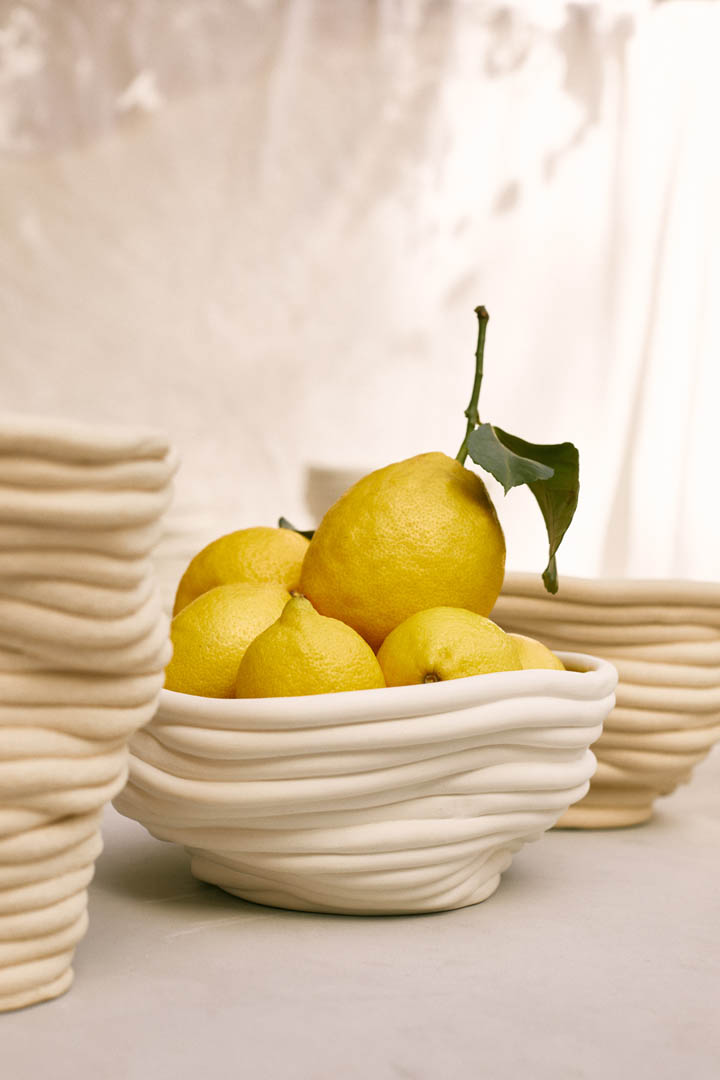
Can you share an anecdote about one of the pieces?
For the Mysig candle, we spent over six months developing the scent. We wanted it to smell like home, to give the instant feeling of comfort and being cosy. The aim was for the scent to take me back to nostalgic moments, like Christmas Eve, Easter and autumnal rainy weekends at home in England, hence the pine and wood notes. The importance of frankincense came from spending time at church. I always filled up my weekends when I was younger, as I think most teenagers do, and it was just one hour on an occasional Saturday evening that I would put aside to go to church with my father. Having moved from England when I was 17, I never really went to church again but the smell of frankincense reminds me of that quality time, spent mostly in silence with family. I want everything I do to have sentimental value and meaning to me; the thought that someone will grow up in a house that has one of my candles, and that smell then becoming nostalgic for them, is a dream. Memories can be unlocked with a familiar smell or taste and that is a powerful concept to tap into.
The Latest
Textures That Transform
Aura Living’s AW24 collection showcases the elegance of contrast and harmony
Form Meets Function
Laufen prioritises design, functionality and sustainability in its latest collections
Preserving Culture, Inspiring Creativity
Discover the Legacy of a Saudi Art Space: Prince Faisal bin Fahd Arts Hall explores the Hall’s enduring influence on the cultural fabric of Saudi Arabia
Channelling the Dada Spirit
Free-spirited and creative, The Home Hotel in Zurich injects a sense of whimsy into a former paper factory
id Most Wanted- January 2025
Falaj Collection by Aljoud Lootah Design
Things to Covet in January
identity selects warm-toned furniture pieces and objets that align with Pantone’s colour of the year
Shaping the Future of Workspaces by MillerKnoll
Stacy Stewart, Regional Director Middle East & Africa of MillerKnoll discusses the future and evolution of design in workspaces with identity.
Shaping Urban Transformation
Gensler’s Design Forecast Report 2025 identifies the top global design trends that will impact the real estate and built environment this year
Unveiling Attainable Luxury
Kamdar Developments has launched 105 Residences, a new high-end development in Jumeirah Village Circle.
The Muse
Located in the heart of Jumeirah Garden City, formerly known as ‘New Satwa’, The Muse adds to the urban fabric of the area
Cultural Immersion Meets Refined Luxury
The Chedi Hegra opens its doors in AlUla’s UNESCO World Heritage Site
Redefining Coastal Luxury
Sunshine Bay on Al Marjan island combines seaside views, exceptional design, and world-class amenities to create a unique waterfront haven
















